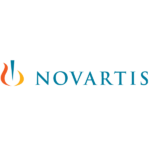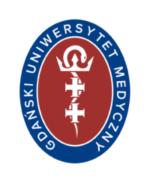Clinical Trials in the Nordic and Baltic Countries
By Mia Bengtström, Senior Advisor, Pharma Industry Finland and Lena Nybond, Research Manager, TurkuCRC; Åbo Akademi University, Finland
In Europe approximately 4 400 clinical trial applications are submitted every year. However, clinical research activities are today increasingly located outside Europe. The clinical trials are also dramatically decreasing in the Nordic and Baltic countries. Due to this decrease there are some national and Nordic initiatives to improve the competitiveness of the region – can these be extended to include all Nordic and the Baltic countries?
Research is a prerequisite for high quality health care and the public often expects research results to be immediately available in the form of best possible health care and medication. According to various sources, the development time of a single pharmaceutical product is 10-15 years and only 1/10,000 of the investigated potential medicinal substances actually ends up on the market. Due to this the development cost of one product entering the market is on average 1-1.5 billion €.
The research associated with pharmaceutical development conducted by the pharmaceutical industry is worth 27.4 billion € in Europe. A substantial part of the industry revenue is spent on research and development and clinical trials stand for more than half of drug development costs. In EU approximately 60 % of the clinical trials are sponsored by the pharmaceutical industry and 40 % by other stakeholders such as academia.
Research plays a significant role in the future of many countries, and its’ successful development needs safeguarding. Research employs the best minds, physicians learn about new therapies and new trends in medical practice, patients gain new treatment opportunities and the academic community maintains a possibility to influence future treatment alternatives in an international setting.
In Europe, industry alone employs 116,000 professionals in pharmaceutical research and development. In addition a huge number of academics and clinical research personnel are involved. Thus, successful pharmaceutical research not only improves health and welfare, but also employment.
Clinical trials are an indispensable part of clinical research, which in turn, is essential to develop medicinal products and improve medical treatment. Without clinical trials there would be no new medicines, no further development of existing medicines and no evidence-based treatments with medicines.
In Europe approximately 4 400 clinical trial applications are submitted every year. However, clinical research activities are today increasingly located outside Europe. The problems related to recruitment of sufficient number of subjects has been identified as one of the reasons for the decrease in clinical trial activities. It is difficult for Nordic and Baltic countries to compete alone with e.g. populations in Asia. Collaboration between Nordic and Baltic countries could substantially increase the competitiveness of the region in a global context.
The Nordic and Baltic countries
According to the EU Commission the number of clinical trial applications has decreased by 25 % from 2007 to 2011 while the costs and bureaucracy have increased. The same decreasing trend is seen in the Nordic and Baltic region with the exception of academic trials in Denmark. This has in some cases been associated with the structuring of clinical research administration in regions and with the existing GCP-network.
About one fourth of the clinical trials are multinational and intended to be conducted in at least two member states. This may seem as a small proportion but these trials actually involve about 67 % of the subjects enrolled. Mononational clinical trials are limited to small studies with low recruitment targets, with the exception of some large vaccine trials conducted e.g. in Finland. Most of the trials conducted in the Nordic and Baltic countries are phase II and III trials.

Figure 1. The total number of clinical trial applications to Nordic regulatory authorities and approvals by Baltic regulatory authorities 2007-2011. (Web pages of the Competent Authorities)

Figure 2. Trial subjects in ongoing clinical trials conducted by members of LMI, PIF, LIF Sweden and LIF DK (vaccine trials in Finland are included). (Source: Pharma Industry Finland)
Finland
The total number of clinical trial applications in 2011 was 141 and the decrease since 2007 was 43 %. The majority of trials were in 2011 sponsored by the pharmaceutical industry, which was a decrease by 46 % since 2007. The corresponding decrease related to academic trials was 31 %.
However, Finland has traditionally been seen as a strong vaccine research country. A positive attitude towards vaccination, excellent infrastructure of vaccination centres of the University of Tampere, National Institute of Health and Welfare, child health centres as well as systematic healthcare in schools have made Finland a world class locus for vaccine trials. The comprehensive population registers allow fluent and fast recruiting of large numbers of patients, also allowing easy monitoring and follow-up of trials. During the past few years these vaccine trials have involved approximately 85,000 trial subjects.
Sweden
Sweden has a long tradition in pharmaceutical research and one of the success factors has been the close collaboration between industry, universities and the healthcare organizations. Regardless of this, the number of clinical trial applications has decreased by 27 % since 2007 and was only 323 in 2011. The number of industry sponsored trials has decreased by 33 % whereas the number of academic trials has increased by 4 %. In 2011 75 % of the trials were sponsored by the industry.
Denmark
The number of clinical trial applications have fluctuated in Denmark but in 2011 they were at the level of 2007 after a 20 % increase. This positive development was primarily driven by academic research, which represents 43 % of all clinical trials. The number of industry sponsored trials has decreased by 26 % whereas academic trials have increased by 86 %. The number of subjects in clinical trials is also significantly higher in academic trials. According to Danish reports two thirds of the trials conducted in Denmark are multinational trials also conducted in other European countries. Of the trials sponsored by the pharmaceutical industry 94 % are multinational whereas only 21 % of the academic trials are multinational.
Norway
Clinical trial applications in Norway show a decrease by 30 % since 2007. The total number of applications was 121 in 2011. Both industry sponsored trials and academic trials have decreased by 30 %. The major part, 69 % of the trials, were industry sponsored in 2011.
Iceland
The number of clinical trial applications in Iceland was 9 in 2011, which all were commercial trial applications. The number of commercial clinical trial applications was 8 in the year before and the number of academic trial applications was 5.
Estonia
The number of clinical trial approvals and variety in medical specialties has gradually increased since the early 90’s but the growth has since then stagnated. The number of trials has decreased since 2007 by 37 % to 57 in 2011. Close to all trials were commercial trials as in the other Baltic countries.
Latvia
The number of clinical trial approvals was 67 in 2011, which is a 21 % decrease since 2007.
Lithuania
The number of regulatory approvals was 96, which is a decrease since 2007 by 22 % in 2011.
Nordic initiatives to increase research collaboration
Due to the decrease in the number of clinical trials in the Nordic area there have been some national and Nordic initiatives to identify challenges influencing research activities in order to improve competitiveness. Such initiatives include the Swedish report Klinisk forskning – ett lyft för sjukvården (SOU, 2009:43) and the report by the Academy of Finland and the Swedish Research Council Clinical research in Finland and Sweden (report 5/2009).
The Nordic Council of Ministers has also initiated a Nordic collaboration network and the respective prime ministers have all expressed their concern over the situation. Nordic collaboration already taking place is e.g. Nordic Health Research and Innovation Networks (NRI-Networks, former NRC Nordic University Hospital Research Conference) with the goal to promote better clinical practice built on active research and innovation throughout the Nordic region. Another example is the recent initiative Nordic Trial Alliance (NTA) network, which aims at halting and changing the present development. The leading idea is to harmonise procedures and improve the research prerequisites by close collaboration. Such collaboration and the combined number of potential trial subjects will hopefully increase clinical activities in the region.
Activities to improve the competitiveness of the Nordic and Baltic region
As clinical research is very important to the EU, the Commission has published a GCP-regulation in order to improve the framework. This would make a great opportunity to benchmark the best practices on a Nordic and Baltic level, to generate a discussion and to introduce focused activities to improve competitiveness in the region.
Many reasons have been identified for the decrease in the number of clinical trials. Some of them are presented in table 1.
| Table 1: Reasons for the decrease in clinical trial activities |
| Dramatic increase in development costs and especially clinical research. |
| All self-evident medicines are already discovered. |
| Fewer new medicines enter the market and there are fewer medicines in the pipelines. |
| Bureaucracy. |
| New competitors in Asia and elsewhere have improved their quality and entered the competition. |
| Phase IV studies are more often conducted as non-interventional trials and thus not recorded in the statistics. |
| Busy healthcare professionals . |
| The financial crisis has also hit the pharmaceutical industry. |
| Marginal markets. |
A lot of concern has been addressed to the decrease in clinical trial activities in the EU and in the Nordic and Baltic regions. Many valuable initiatives have been made and there is definitively an interest to increase collaboration between stakeholders and the regions. On a Nordic level the initiatives taken aim at increased collaboration – could these initiatives be expanded to include the Baltic region?
References:
Academy of Finland (2009). Clinical Research in Finland and Sweden. Evaluation report 05/2009 (Finland).
Nordic Health Research and Innovation Networks (NRI Networks) homepage. http://www.nrcnetwork.com/.
Nordic Trial Alliance (NTA) homepage. http://www.nordforsk.org/no/programs/nordic-trial-alliance-nta.
OHE (2012). The R&D cost of a new medicine. Office of Health Economics (UK).
Skards, J., Aboltina, I. & Polenenaite, I. (2012) Clinical trials in The Baltic States – Latvia and Lithuania. J. Clinical Studies, 4, 10-13.
SOU (2009). Klinisk forskning – ett lyft för sjukvården. Statens offentliga utredningar 2009:43 (Sweden).
Sundhedsstyrelsen (2011). Annual report 2011. Clinical trials of medicines in humans. Danish Health and Medicines Authority.
Työ- ja elinkeinoministeriö (2012). Terveysteknologia- ja lääketutkimus Suomen kasvun tukijana. Ministry of Employment and the Economy (Finland).
Pharma Industry Finland invites to an informal Nordic and Baltic discussion about future collaboration. Please contact Mia Bengtström, .
ScanBalt News
19 February 2025
Unlocking Opportunities: Latest Trends & Developments in Sweden’s Life Sciences & Health Sectors | 7 March 2025, 10:00-11:00 CET (online)
18 October 2024
Unlocking Europe's Potential in Bioproduction | 12 November 2024 | 10:30-12:00 CET (online)
10 October 2024
NOME Startup Competition 2024 | Dealine November 1st











